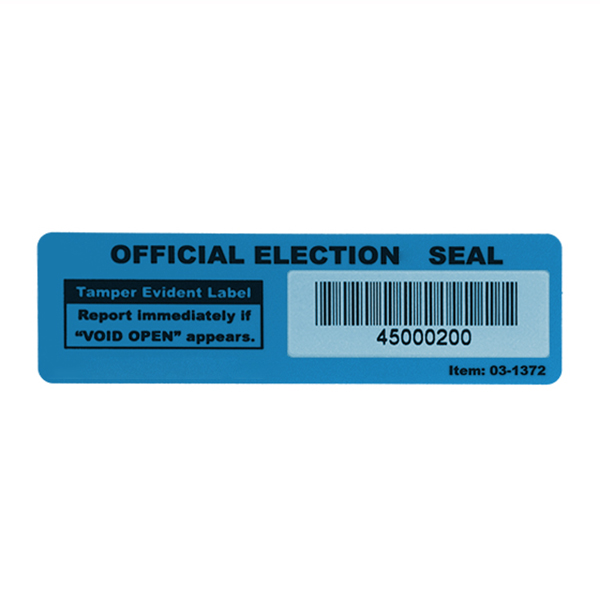
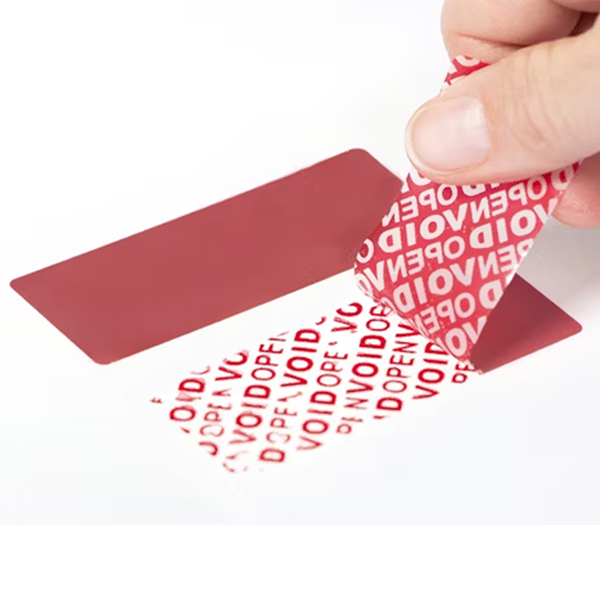
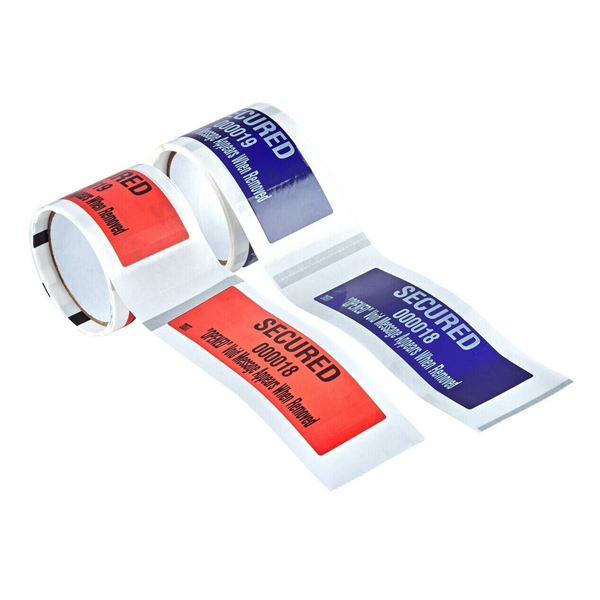
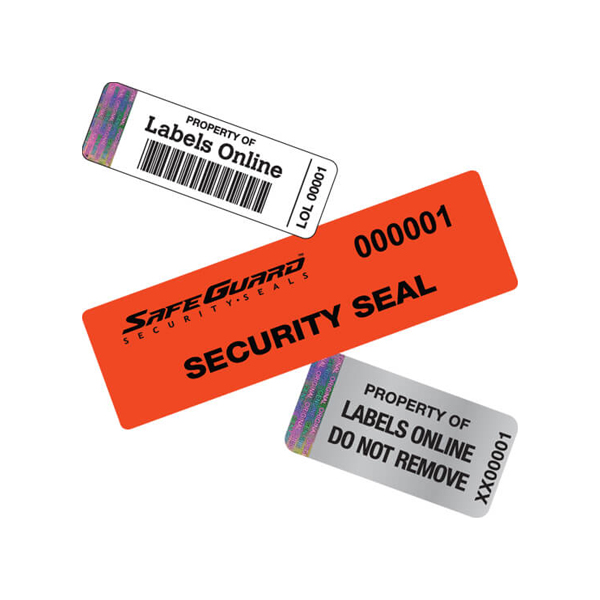
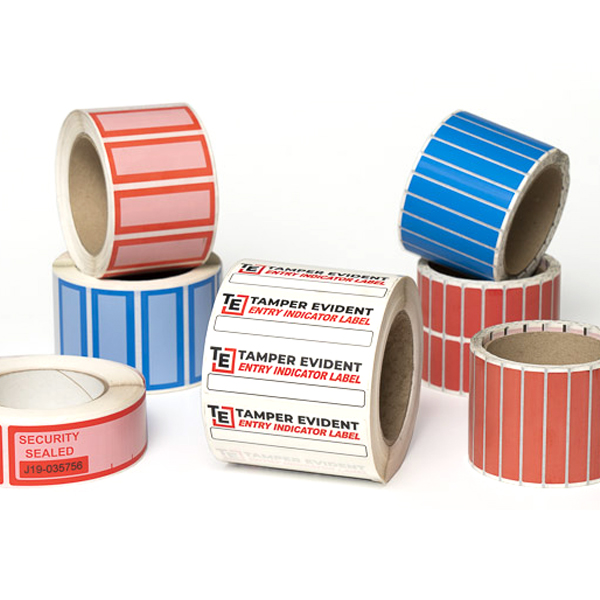
| Security Label | |
| Shape | Customized |
| Materials | PE, Vinyl, PET, BOPP, etc |
| Performance | Anti-Counterfeiting, Holographic, Self-Adhesive, Disposable |
| Colour | Pantone and RAL color matching system |
| Adhesive | Oil glue, water glue |
| Printing | Color Printing, Screen Printing, Thermal Transfer, Offset Printing, Lithography, Water Transfer, Digital Printing, Gravure Printing |
| Surface Finishing | Glossy, Matt, UV, Silver or Gold Hot Stamping |
| Thickness of Epoxy | 0.1~0.3mm |
What is A “Security Label”?
Security label is a technical means to provide unique and non-reproducible identification for products through the use of advanced technologies (such as laser holography, special ink, miniatures, digital security code, etc.) to protect the rights and interests of brands and consumers.
Unique security label: Each security label contains unique information, such as serial number, two-dimensional code, etc., to ensure that the product is unique and non-copyable.
The security label is traceable: the information on the security label can be verified by specific technical means to trace the source and direction of the product.
Security label has the advantages of security: The advanced anti-counterfeiting technology makes it extremely difficult to forge and improves the anti-counterfeiting ability of the product.
Features & Benefits of Security Label Include:
Product Features
Unique identity: Each security label has a unique encoding that is encrypted to ensure that the security label is non-replicable and non-transferable. This uniqueness allows each item to be uniquely identified by its security label.
Security: The materials and manufacturing process of security label are resistant to common physical and chemical attacks, ensuring the security and stability of anti-counterfeiting information. At the same time, the password database of security label usually uses an independent server, which further enhances the security and confidentiality of the system.
Stability: Under normal conditions of use, the anti-counterfeiting identification features of the security label can be maintained for a long time to ensure the durability of the anti-counterfeiting effect. For example, the identification performance of digital security label has no time, and it can maintain good anti-counterfeiting effect during the entire life cycle of the product.
Anti-counterfeiting strength: The anti-counterfeiting strength of security label is composed of several factors, such as the number of anti-counterfeiting identification features, the number of anti-counterfeiting technology exclusivity, the difficulty of imitation and the size of imitation cost. The security label with high anti-counterfeiting strength can effectively resist various counterfeiting methods.
Application adaptability: The security label can be applied to various types of products, whether it is high-end products or daily consumer goods, and can be anti-counterfeiting protection through the appropriate security label.
Identification performance: The anti-counterfeiting identification features of the security label can be correctly identified by the senses or the machine (instrument) within the required identification time. Consumers can easily check the authenticity of products through the anti-counterfeiting code or two-dimensional code on the security label to improve the shopping experience.
Product Benefits
Enhance product credibility: security label shows the authenticity and reliability of products to consumers, thus enhancing the credibility of products. This helps to increase consumers’ willingness to buy and trust in the product.
Protect the brand image: security label can effectively prevent the circulation of fake and shoddy products, so as to protect the brand image from damage. This is crucial for businesses, as brand image is the cornerstone of long-term growth.
Improve consumer satisfaction: Consumers can verify the authenticity of products through the Security label to protect their rights and interests, thus improving their satisfaction. This helps to build a stable consumer base and promote the long-term development of the business.
Fight against illegal acts: The technicality and difficulty of copying security labels make it difficult for criminals to carry out large-scale counterfeit and shoddy production. This has, to a certain extent, cracked down on illegal acts and maintained market order and a fair competition environment.
Upgrade the product grade: For high-end products or high-value products, the security label can be used as a symbol of quality assurance to improve the product grade and price. This helps to meet consumers’ pursuit of high-end products and increase the profits of enterprises.
Enhance consumer stickiness: When consumers get used to the security label of a certain brand, they will develop trust and dependence on the brand, thus enhancing consumer stickiness. This helps companies build stable customer relationships and brand image.
What Special Features Can Be Incorporated into Security Label?
- Unique coding and traceability function
Unique code: Each security label is assigned a unique code, which is closely bound to the product information to ensure that the product is unique and non-reproducible.
Traceability function: By scanning the two-dimensional code on the security label or entering the code, consumers can trace the information of the production, circulation and other links of the product to enhance their trust in the product.
- Combination of multiple anti-counterfeiting technologies
Physical anti-counterfeiting: The use of special materials, special printing processes and special identification and other physical characteristics, such as special inks, watermarks, miniatures, etc., to improve product identification and anti-counterfeiting capabilities.
Digital anti-counterfeiting: combined with digital technologies, such as two-dimensional code, bar code, RFID, etc., to provide consumers with a convenient way to query, while increasing the complexity of security label and difficult to copy.
Biometrics: In some high-end areas, security labels may also use biometric technology, such as fingerprints, iris, etc., to achieve a higher level of anti-counterfeiting protection.
- Anti-channeling and channel management functions
Region code: The region code is embedded in the security label to monitor the flow of products, prevent dealers from cross-selling, and maintain the price system of the enterprise and the orderly development of the regional market.
Logistics tracking: Combined with the Internet of Things technology, the whole process of product logistics tracking is realized to ensure the traceability and safety of products from production to sales.
- Interactive marketing and after-sales service functions
Interactive marketing: security label can also be used as a bridge between enterprises and consumers to participate in activities such as sweepstakes and point exchange by scanning labels to enhance consumer participation and brand loyalty.
After-sales service: Consumers can query the after-sales service information of products through the security label, such as warranty period, maintenance network, etc., so that consumers can enjoy convenient after-sales service.
- Enhanced security and anti-counterfeiting
Encryption technology: Advanced encryption technology is used to process the information in the security label to ensure the security and immutability of the information.
Diversity of anti-counterfeiting identification features: Combining a variety of anti-counterfeiting identification features, such as laser holography, special ink, miniaturized text, etc., to improve the complexity of security labels and the difficulty of imitation.
- Specific needs of specific industries
In the field of luxury goods, jewelry, wine and other high-end goods, security label needs to have higher anti-counterfeiting capabilities and aesthetics to meet consumers’ demand for quality and identity symbols.
In the food industry, a security label may need to contain key information such as the source, production date and shelf life of the food to ensure food safety.
In the pharmaceutical industry, security label needs to ensure the authenticity, quality and safety of drugs to prevent counterfeit and shoddy drugs from entering the market.
- Back adhesive
According to the use of the product environment and requirements, choose the appropriate type of back adhesive, such as waterproof, temperature resistance, super bonding, etc. We offer 3M, Crown, Soken, Nitto, Sony, Luxking and other adhesive brands.
BX Panel Security Label Technical Information
- Preliminary preparation
Demand communication: fully communicate with customers to understand their specific needs, including the size, function, anti-counterfeiting technology, material, color, pattern and other basic information of security label.
Data submission: Customers need to submit relevant information, such as business license, trademark registration certificate or use authorization, product inspection report, health permit, etc., in order to carry out subsequent design and printing work.
Second, the design phase
Design draft: Designers according to customer needs and brand image, design both beautiful and anti-counterfeiting function of the label draft. The design process should take into account the anti-counterfeiting effect, identification method, color matching, size and other factors, and ensure that the design style is coordinated with the overall design style of the product packaging.
Customer confirmation: After the first draft of the security label design is completed, it will be submitted to the customer for confirmation. Make changes based on customer feedback until the customer is satisfied.
Three, plate making stage
Plate making: According to the security label design manuscript, the plate maker uses professional plate making equipment to convert the design manuscript into a plate that can be used for printing. Common plate making technologies include laser plate making and electronic engraving plate making, which can ensure the accuracy and stability of the plate.
Four, printing stage
Printing: The printing press transfers the ink to the Label material according to the pattern on the printing plate to form the prototype of the security label. In the printing process, the color, pattern and size need to be precisely controlled to ensure that the printed security label is exactly the same as the design draft. At the same time, it is also necessary to use special inks and printing processes to enhance the anti-counterfeiting effect.
Quality inspection: Quality inspection is required in the printing process. If quality problems are found, the printing parameters need to be adjusted in time. After the printing is completed, the quality of the finished product needs to be tested, including size, color, clarity, thickness, etc., to ensure that the quality of the anti-counterfeiting label meets the requirements.
- Follow-up treatment
Coating: A coating with anti-counterfeiting effect, such as scratch silver, is applied on the surface of the security label to increase the complexity and identification difficulty of the anti-counterfeiting label.
Die cutting: Cut the printed security label according to the design shape and size. During the die cutting process, the pressure and precision of the die cutting should be controlled to ensure that the edge of the anti-counterfeiting label is smooth and neat.
Waste removal: Clean up the excess parts that have been cut to ensure the integrity and aesthetics of each anti-counterfeiting label.
What Industries Use Security Label?
Chemical industry
Importance: Chemicals are usually flammable, explosive, toxic, harmful and other characteristics, so chemical security label is particularly important in the chemical industry.
Application: The security sticker is used to label the risk, preventive measures, and emergency response methods of chemicals to ensure that workers can clearly understand the characteristics of chemicals and take appropriate safety measures.
Food and beverage industry
Importance: Food safety is a major concern for consumers, and security labels are used in the food and beverage industry to ensure product compliance and safety.
Application: The security label may contain key information such as ingredient list, allergen information, production date, shelf life, storage conditions, etc., to help consumers make informed purchasing decisions and use the product safely.
Pharmaceutical and health products industry
Importance: Medicine and health care products are directly related to people’s health and safety, so security label plays a vital role in these industries.
Application: The security label usually contains key information such as the name, ingredients, usage, dosage, precautions, and contraindications of a drug or health care product to ensure that patients or consumers can use the product correctly and avoid potential risks.
Electronics and IT industry
Importance: With the popularity of electronic products and the development of IT technology, security label also plays an important role in the electronics and IT industry.
Application: The security label may be used to mark the product’s serial number, warranty information, certification mark (such as CE, FCC, etc.), and safe use guidelines to ensure product traceability and compliance.
Cosmetics and daily necessities industry
Importance: Cosmetics and daily necessities are closely related to People’s Daily lives, and security labels are essential to ensure product safety and compliance.
Application: The security label may contain information such as the ingredients list, instructions for use, precautions, production date and shelf life of the product to help consumers use the product correctly and avoid potential risks.
Clothing and textile industry
Importance: While products in the apparel and textile industry may not be as directly hazardous as chemicals or pharmaceuticals, security labels are still used to provide essential product information and guidance.
Application: The security label may contain key information such as fabric composition, washing instructions, size information, production location, etc., to help consumers understand the product and use it correctly.
Agriculture and agricultural materials industry
Importance: In the agriculture and agricultural materials industry, security labels are used to ensure the compliance and safety of agricultural products such as pesticides and fertilizers.
Application: The security label usually contains the product name, ingredients, use method, precautions, safety interval and other information to guide farmers to use agricultural products correctly and avoid pollution to the environment and agricultural products.